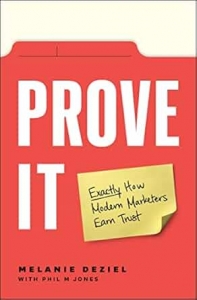The Convenience Factor in Content Marketing
This week, in our Say It For You blog, we’re sharing insights from the book Prove It, in which authors Melanie Deziel and Phil M. Jones teach readers how to use content as a tool to earn audience trust…
Even before you get to the “proof” stage in your marketing, according to RevLocal, there are five pieces of primary information that consumers use to either learn more about a business, or reject it out of hand. These include price, products and services offered, the availability of both, customer service, and (for services in particular) – location. Coupons and special offers may be important, the authors add, as are testimonials and reviews.
“Claiming to be convenient is making a promise that customers’ interactions with you will be frictionless,” Deziel explains, quoting statistics from the National Retail Federation showing that 9 out of 10 customers choose a retailer based on convenience, with that observation holding true for groceries, electronics, personal care items, and pet supplies.
As head of a team of content marketers at Say It For You, I found those observations about convenience especially important. Creating a steady stream of content takes time and patience, which is precisely the reason many entrepreneurs employ ghost writers. “Winning back time” is the way Doug Karr and Chantelle Flannery, co-authors of the book Corporate Blogging for Dummies describe the big advantage for business owners, or professional practitioners in “hiring it done when it comes to composing, researching, and editing content”.
On the other hand, what I’ve experienced over the past eighteen years is that, if the content is to succeed in demonstrating that the business owner or practitioner is staying in touch with what’s happening in the community, as well as in his or her field of expertise, the process of creating content cannot be a matter of “do-it-for-me-and-wake-me-up-when-it’s-over”. Even as they offer maximum convenience to their customers, the owners themselves should not expect to enjoy the “convenience” of non-involvement in the process of creating content.






Follow us online!